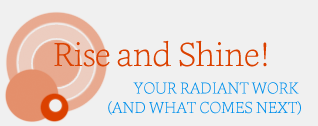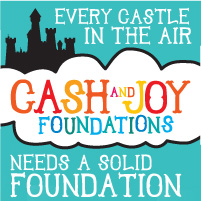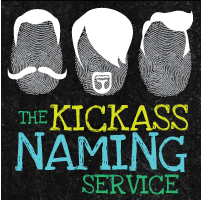London was soot and smog and ceaseless machinery, and Charlie was one of the many many boys fed daily to the machines.
Charlie, like a swarm of other ragamuffins, sold the ha’penny broadsheets over on Whitechapel for enough blunt for a chop, gin, and a bit for his mum.
Not the biggest or the boldest, his only advantage was a fair dash of cunning and a quick tongue. Competition was deadly intense: once Charlie managed to claim a prime corner and had a half-brick thrown at him.
So Charlie made do with a less ideal situation, and used his wits to shout out attention-grabbing slogans. “Ya don’t wanna look ignorant, do ya?” was not a huge success, but most did get him more sales than he would otherwise make.
Then one day he awoke with a nonsensical rhyme in his head. When he reached his patch he tried it. “‘Oos dead, ‘oos wed, ‘oo fell off a sled?” he chanted loudly while waving his paper. Doggerel though it was, the rhyme got more attention than usual, and more ha’pennies.
One posh gent in a frock coat and fob watch walking past said, “Who fell off a sled?” Charlie cheekily replied, “I dunno, guv, I carn’t read now can I?” The gent laughed and paid Charlie a whole penny. With that unexpected windfall and the rest, Charlie sold more than he’d usually get in two days.
The next day Charlie tried another new slogan, but it wasn’t doing anywhere near so well as the rhyme had. Shrugging, Charlie again chanted ”‘Oos dead, ‘oos wed, ‘oo fell off a sled?” and sold papers. The gent exchanged another round of banter and another penny, and Charlie decided he was on a winner.
Month after month, Charlie used the same rhyme, with only occasional variations. (Once, topically, the rhyme became ”‘Oos dead, ‘oos wed, ‘oo went off ‘is ‘head?”) He became a fixture, with more regular customers than a broadsheet seller can generally hope for.
And on his birthday, the gent gave Charlie a whole farthing. Charlie bought his mum new scissors, his sister a ribbon, and got knock-down-drag-out drunk on the rest.
The rhyme continued, a bit subdued, the next day… and every other day until Charlie went off for greater adventures.
The moral of the story
Repetition is criminally underused.
There seems to be a shared belief in the online world that repetition will make you dull and predictable and forgettable. But while repetition often accompanies dull forgettable content, it’s not responsible for it. Repetition, used well, can produce beautiful results.
Repetition builds trust.
When there are themes, words and motifs that reoccur on a regular basis in your content, they become familiar. YOU become familiar. And familiar lives next door to trustworthy.
Repetition creates community.
Ever had a moment where you and a near-stranger have sung a theme song together and them laughed as friends after? If that theme song had changed every week, that could never happen.
Pretty obvious, I grant, but so many of us seem determined to have nothing the same this week as last week.
Repetition creates rhythm.
This one often feels especially important online, where the barriers to entry are so low. We need to see that you’re you’re here to stay before we are likely to trust and invest with you. Rhythm is a dance with time, and demonstrates it beautifully.
Repetition is memorable.
Our brains love encountering information they’ve seen before: it reduces the cognitive load in processing. Repeated elements are more likely to be remembered than one-time ones. This also means that repeated information has more impact.
Repetition saves your brain.
If you have to create a new intro and signoff for every single email and newsletter and article and interview and podcast, or whatever, then you are monstrously inefficient. Worse, if you’re trying to make every single one of them interesting and memorable…
How to use repetition well.
Firstly, choose what you’re going to repeat. Here’s a big-ass list of options to get you started:
Words and phrases
Repeat as desired.
- technical terms (especially your own)
- endearments
- intros
- endings
- metaphors
- running jokes
- quirky phrases
- references
- quotations
- made-up and portmanteau words
Frameworks, formats and templates
The specific words change, but the shape is the same.
- newsletters
- product names (it works for Apple)
- product descriptions
- image captions
- teleclasses
- email signatures
- e-books
- autoresponders
- article titles (“X ways to Y”)
- the articles themselves
- sales pages
Other stuff
- visual elements
- fonts
- recurring characters
- themes
- colour schemes
- topics
- theme music
- shared beliefs
- stock photos
- easter eggs
Second, experiment until you find what suits you and your audience.
(For example, I play around with words constantly. “Squoodles” was added to my regular vocabulary after four different people emailed me just to say how much they loved that word.)
Then there are two ways to implement the repetition.
Set it in stone and do not alter it unless absolutely necessary.
This works best for elements that exist in specific times and places, like intros and outros. (Edward R. Murrow wasn’t the only reporter to use the same sign-off line at the end of every show, but he’s a beautiful example of doing it well.)
Use it as a motif.
You can use the melody, or a variation on the melody. For example, if you address your readers as “mewling minions”, then a) that is awesome, and b) you don’t have to use the exact phrase all the time if you don’t want to. (You could also call them “subaquatic slimebags”, if you like.)
Then the most important part: stick to it.
The more consistent you are with this, the more clear the impression will be.
You’ll notice it happening, as your readers quote you to each other, or describe something to you in your own words, or reference you to someone else as an example of a particular feel, or regard you as the go-to on a topic you revisit often.
Yes, that is exactly as awesome as it sounds.
A little less conversation, a little more action
If you want to start using repetition in your communications, then today:
- Decide what you’re going to start repeating.
- Create a repository, if needed (a notepad, a spreadsheet, a template).
- Use it today.
- Use it next time.
- Repeat.
If you don’t know what to repeat because you couldn’t describe your audience at gunpoint, then have a look at Goddamn Radiant. We’ll get you describing your wonderfabulous readers with spot-on repeatable prose in no time.
![]() photo credit:
photo credit:








18 Comments